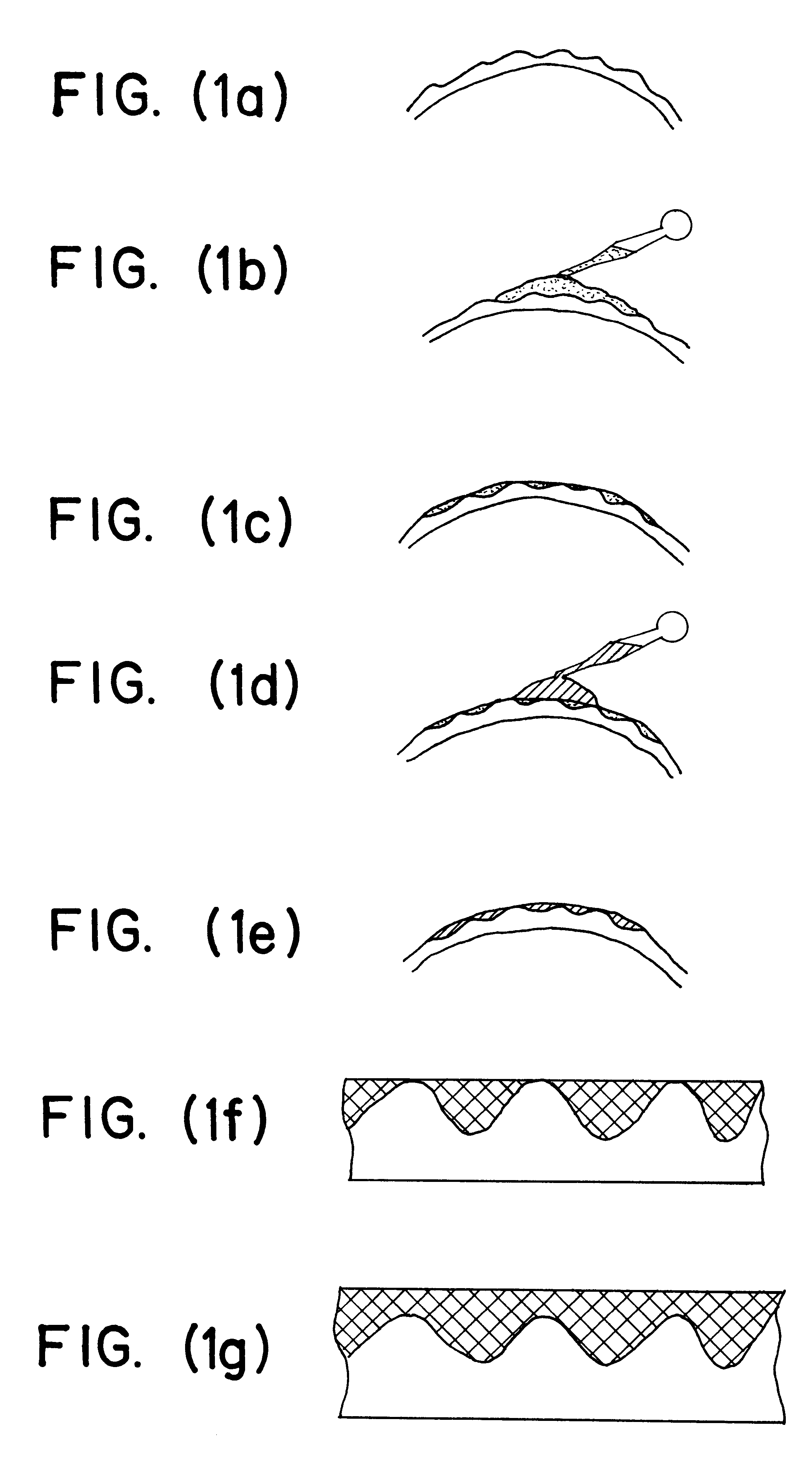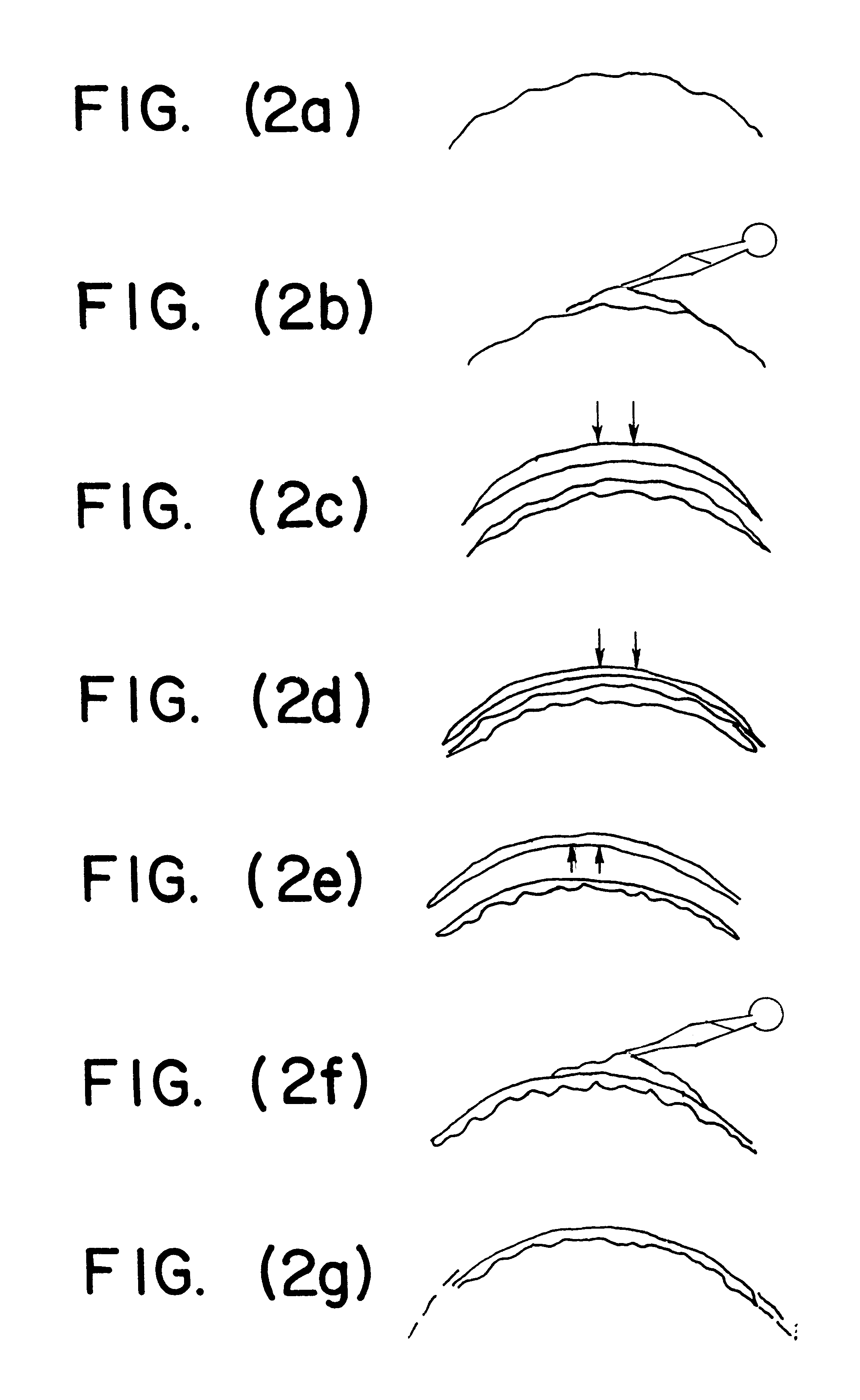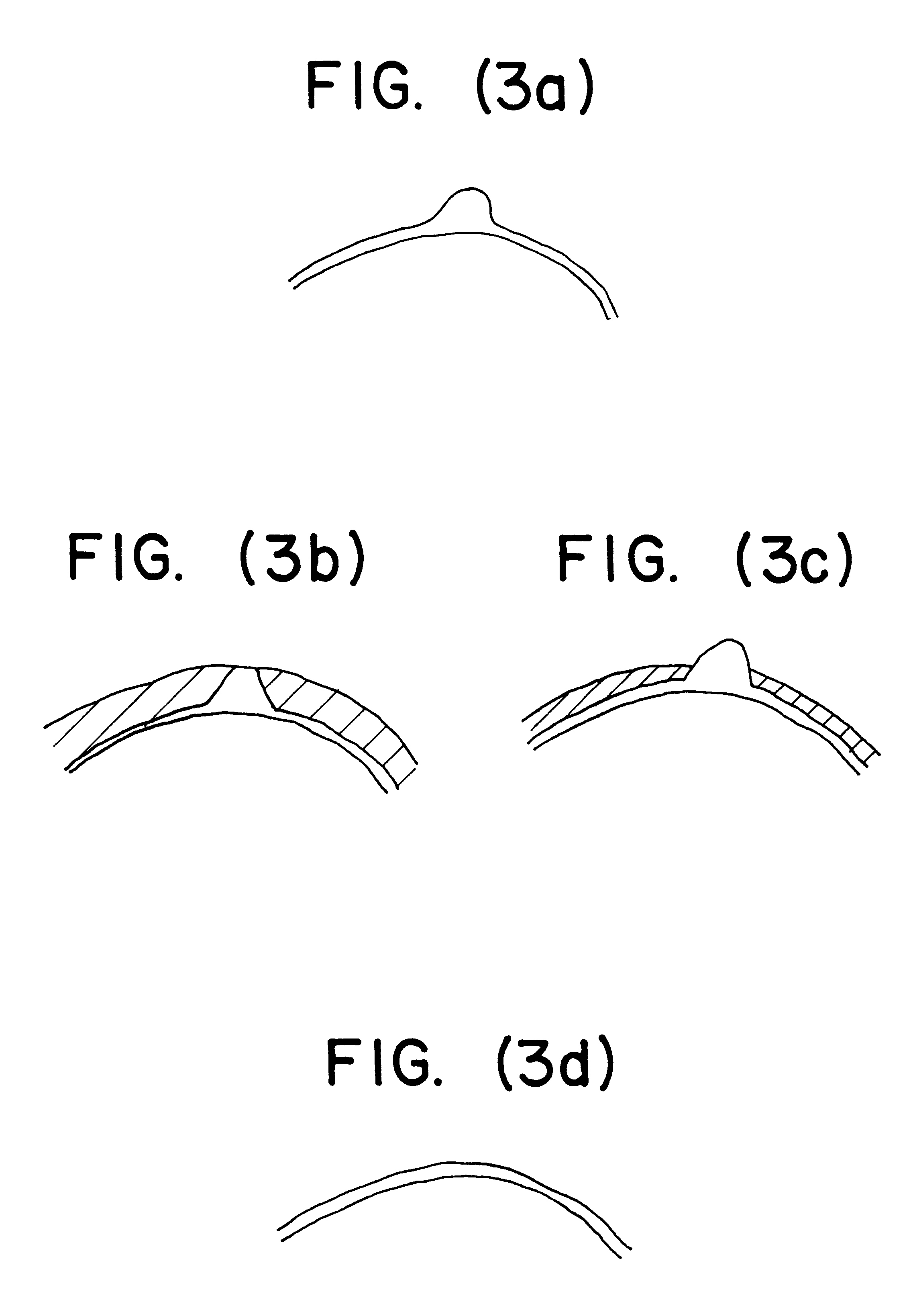Collagen modulators for use in photoablation eximer laser keratectomy
a technology of collagen modulator and laser keratectomy, which is applied in the direction of eye treatment, peptide/protein ingredient, peptide, etc., can solve the problems of increased irregularity of the corneal surface following ablation, conventional modulators suffer from a number of deficiencies, and the modulator (1) is difficult to apply smoothly
- Summary
- Abstract
- Description
- Claims
- Application Information
AI Technical Summary
Problems solved by technology
Method used
Image
Examples
example 2
Preparation of Glutaric Anhydride Collacen Solution
In this Example, a pure, acid solubilized collagen was prepared as described in Example 1 without the subsequent dialysis steps. The collagen solution (3.0 mg / ml) was diluted to 2.8 mg / ml with 0.1 M acetic acid and filtered through a sterile 0.2 micron filter. The solution (100 ml) was adjusted to pH 9 and 7 mg (2.5 wt. %) of glutaric anhydride was added. The modification reaction proceeded for 20 minutes at 25.degree. C. Thereafter, the pH was decreased to pH 4.3 to precipitate out the modified collagen. The precipitate was recovered by centrifugation and was washed three times with deionized water. The washed precipitate was very fine and granular. This material was dissolved in 10 ml of phosphate buffer (4 mM, pH 7.8) and the resultant solution was adjusted to pH 7.4 with 1 N NaOH. Thereafter, the solution was filtered through a sterile 5 micron filter unit. The modified collagen solution was viscous, clear, and transparent. The ...
example 3
Preparation of an Extensively Modified Glutaric Anhydride Collagen Solution
In this Example, a pure, acid solubilized collagen was prepared as described in Example 1 without the subsequent dialysis steps; The collagen solution (3.0 mg / ml) was diluted to 2.8 mg / ml-with 0.1 M acetic acid and filtered through a sterile 0.2 micron filter. The solution (100 ml) was adjusted to pH 9 and 56 mg, (20 wt. %) of glutaric anhydride was added. The modification reaction proceeded for 20 minutes at 25.degree. C. Thereafter, the pH was decreased to pH 4.3 to precipitate out the modified collagen. The precipitate was recovered by centrifugation and was washed three times with deionized water. The washed precipitate was very fine and granular. This material was dissolved in 10 ml of phosphate buffer (4 nM, pH 7.8) and the resultant solution was adjusted to pH 7.4 with 1 N NaOH. Thereafter, the solution was filtered through a sterile 5 micron filter unit. The modified collagen solution was viscous, cle...
example 4
Preparation of Quinolone Collagen Solution
In this Example, a pure, acid solubilized collagen was prepared as described in Example 1 without the subsequent dialysis steps. The collagen solution, at a concentration of 2.2 mg / ml in 0.1 M acetic acid, was filtered through a sterile 0.22 micron filter. The solution (about 200 ml) was adjusted to pH 9 with 10 M NaOH and 1 M NaOH and 40 mg (9 wt. % based on total collagen) of quinoline sulfonyl chloride was added as a solid. The modification reaction proceeded for 60 minutes at 25.degree. C. while maintaining the pH at about 9.0. Thereafter, the pH of the solution was reduced to pH 7 and the solution was filtered sequentially through a 0.45 micron filter and 2.2 micron filter. The filtered modified collagen solution was precipitated by reducing the pH to 4.6 using 6 N HCl and 1 N HC1. The precipitate was recovered by centrifugation and washed three times with sterile deionized water. The final precipitate was dissolved in phosphate buffere...
PUM
| Property | Measurement | Unit |
|---|---|---|
| physiological temperature | aaaaa | aaaaa |
| concentration | aaaaa | aaaaa |
| pH | aaaaa | aaaaa |
Abstract
Description
Claims
Application Information
 Login to View More
Login to View More - R&D
- Intellectual Property
- Life Sciences
- Materials
- Tech Scout
- Unparalleled Data Quality
- Higher Quality Content
- 60% Fewer Hallucinations
Browse by: Latest US Patents, China's latest patents, Technical Efficacy Thesaurus, Application Domain, Technology Topic, Popular Technical Reports.
© 2025 PatSnap. All rights reserved.Legal|Privacy policy|Modern Slavery Act Transparency Statement|Sitemap|About US| Contact US: help@patsnap.com



